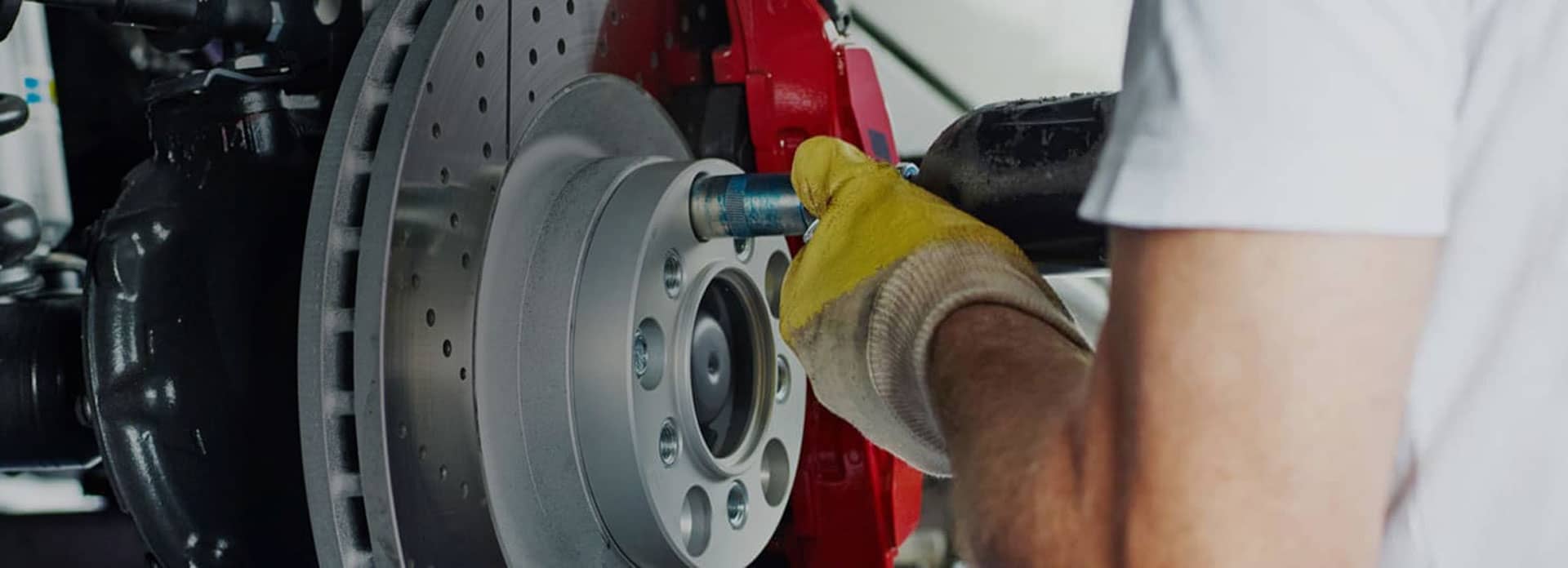
AUTONET TV
Archive for December 2024Clean Slate (Protecting Vehicle's Finish)Posted December 29, 2024 3:10 AMWinter is one of the hardest times to keep your vehicle clean. But did you know neglecting to wash your vehicle in winter could cost you a significant amount of money in the long run? Here's why. Many areas deal with snow and ice in the winter, and the salt and sand that are used to keep the road surfaces from being slick are also super corrosive to a vehicle's metal body and undercarriage. That includes all the parts underneath that can be splashed with brine, saltwater and other road debris. Winter is also tough on vehicles where there isn’t snow, sometimes from ocean salt or winter's extra humidity and rain. If you have any breaks in your vehicle's paint, whether it be from a little fender bender or a stone chip, that corrosive winter moisture can get through those cracks and start eating away at the metal underneath. If you can, you should get any dents or damage fixed as soon as possible so your vehicle has a protective layer of paint between road chemicals and the metal. You may want to wait until the warmer weather, but while you're waiting, the damage is getting worse. If you're not sure of a reputable body repair shop, check with the service advisor where you have mechanical work done. They're usually knowledgeable about who is good and not so good. You also may be tempted to skip the car wash during the winter since your vehicle is just going to get dirty fast anyway. You may want to reconsider. Many winter road treatments now use brine that gets in every nook and cranny of your vehicle. It's wise to clean that off regularly during the winter, and many washing facilities include a spray underneath that gets rid of that salt. Your vehicle repair facility may even have its own car wash, a nice bonus when you take your vehicle in for repair or regular maintenance. McPherson Automotive Don't be Fuelish (Signs Fuel Pump is Failing)Posted December 22, 2024 3:10 AMA driver of a large SUV loaded with equipment was heading on a 7-hour work trip when he stopped at a gas station to refuel. When he went to restart his SUV, it turned over but wouldn't catch. Try as he might, he was never able to get it started again. Of course there are many things that can cause those symptoms, but the next day he had his SUV towed to a service repair facility. Using their test equipment, they were able to pinpoint the problem. His fuel pump had failed. The pump, which was located in the fuel tank, had to be replaced, and after awhile he was back on the road, delayed, but happy to be up and running again. What had happened is that the pump was not strong enough to deliver adequate fuel to his engine, vital to being able to start it. It had delivered just enough pressure in the morning to get it started the first time, but it was on its last legs. He had been having trouble starting his SUV in the days leading up to this trip, a clue that something was wrong. The engine relies on a certain pressure of fuel from the pump to run properly, and there are some other signs to be aware of that your fuel pump may need to be replaced. If you are putting strain on your engine, such as going uphill or hauling a big load, and the engine sputters, it may be a sign that the pump isn't delivering that consistent pressure. Another warning sign is if your engine is running hot and then stalls. That could mean your fuel pump is getting weak. Sometimes you might notice your vehicle suddenly speeds up on its own or your fuel economy goes from good to poor in a short time. If your fuel gauge shows you have plenty of fuel in the tank and your engine stalls, that's another possible sign of a failing fuel pump. Technicians have special equipment to see where the fuel problems are, and there are many possibilities. Have your vehicle checked before you're left stranded. Oh, and one more tip to prolong the life of your fuel pump. Since it is cooled and lubricated by the fuel in your tank, make sure you keep at least a quarter of a tank of fuel at all times. Avoid your "low fuel" light going on and you may be helping yourself avoid having to replace your fuel pump. McPherson Automotive Put the Brakes On! (Brake Caliper Replacement)Posted December 15, 2024 3:12 AMKeeping your vehicle's brakes in top shape is one of the most important things you can do for your safety and those on the road with you. Most drivers know a little about brake pads and rotors but maybe not so much about another brake component called the calipers. Disc brakes work by a mechanical system that presses your brake pads against discs called rotors (you can usually see these discs through your wheels). The friction stops your vehicle smoothly when everything is working the way it should. The calipers use the hydraulic pressure of the brake fluid to apply the stopping power. After they've been on your vehicle for a while, the calipers can get stuck or wear out. If calipers on one side of the vehicle work correctly and not on the other, you might feel a pull in one direction. You might feel the same kind of pull if the caliper is stuck and is applying constant pressure. You might hear scraping or squealing coming from a stuck caliper and you might smell burning on that side. The friction from a caliper that's always applying pressure may cause that wheel to heat up, so after you've pulled your vehicle off the road safely, the wheel with the stuck caliper will might feel hotter than the others Because there are many different components to the brakes, it's best to leave the diagnosis and repair to a trained technician. They will run each wheel through a series of tests and inspections that can pinpoint the problem. Sometimes it involves more components than just the caliper that may need changing at the same time. The best way to make sure your brakes will perform well is to is to have our service center perform regular inspections and follow the vehicle manufacturer's recommended service. That way your brakes will be ready, willing and able when you call on them to put a stop to things. McPherson Automotive Your Biggest Fan (Radiator Fan Problems)Posted December 8, 2024 3:10 AMYour vehicle's engine makes a lot of heat when it's powering you down the road, so it needs a way to get rid of that energy. That's why your vehicle has a cooling system, complete with a radiator and one or two radiator fans, also called cooling fans. Those fans make sure air keeps moving across the radiator so that the heat stored in the coolant can be dissipated outside when the vehicle is stopped or not traveling fast. Radiator fans can develop problems and can stop working properly or stop working altogether. Some signs to look for? If you're driving slowly and idling and you see your temperature gauge moving toward the red or hot zone, that could spell trouble. Another thing you may notice when a radiator fan is failing is that there may be a loud noise coming from the engine compartment. There are two types of radiator fans. One is mechanically connected to the engine and uses the engine's rotational energy to turn it. The other is an electric fan and is the type used in most newer vehicles. In the electrical type, one of the components, such as a relay or fuse, may fail, causing the fan to stop turning. In the mechanical type, since it's driven by a pulley/belt mechanism, one of those components may break or stop working properly. A clutch can wear out or a belt may slip or break. When your cooling fan isn't working properly, it may cause your engine to overheat which could lead to expensive damage. That's why it's important to make sure you visit your service facility if you notice any of these symptoms. A technician is trained to diagnose the problem and make sure your radiator fan is doing its job. When it comes to your vehicle, your radiator fan really is your biggest fan. McPherson Automotive In the Hot Seat (Repair and Maintenance of Seat Heaters)Posted December 1, 2024 3:09 AMIt's chilly outside. You flip on that switch that looks like a picture of a seat with little heat waves rising from it. You expect soon you'll feel that warmth but… wait! It's not getting warmer. Oh no, what's wrong with my seat heater? There could be lots of reasons it's not working, and it could be as simple as a fuse or as major as the heating element itself. But it's something to leave to a pro to diagnose and repair. Let's say it turns out to be a blown fuse. Simply replacing the fuse may not fix it because there was a reason the fuse blew in the first place. It's possible the on-off switch has worn out or corroded. Perhaps the wiring connection isn't completing the circuit (could be corroded or full of dirt) or the voltage reaching the heating element isn't correct. There's a little sensor that keeps track of the seat heater's temperature called the thermistor. When the seat is hot enough, it will stop the juice from heating it any more. Sometimes those fail. But if all of these components are healthy, you may need a new heater element. Those seat-heating elements are made up of wires that get sat on. A lot. That can put significant strain on them. Putting something heavy on the seat can break them. Or, if you put your knees on the seat cushion as you're getting something in a rear seat, that can also damage the element. Sometimes they can be repaired but often they have to be replaced. And here is where the technician's expertise comes into play. That heater element is attached to the seat's fabric and replacing it can be tricky. It also can require disassembling a lot of the seat to access it. Seat heaters are a wonderful feature and they make your vehicle oh, so much cozier. So keep them working and enjoy the warmth! McPherson Automotive | ||
SearchArchiveJuly 2018 (16)August 2018 (4) September 2018 (5) October 2018 (4) November 2018 (4) December 2018 (5) January 2019 (5) February 2019 (4) March 2019 (5) April 2019 (4) May 2019 (4) June 2019 (5) July 2019 (4) August 2019 (4) September 2019 (5) October 2019 (4) November 2019 (4) December 2019 (5) January 2020 (5) February 2020 (4) March 2020 (5) April 2020 (4) May 2020 (5) June 2020 (4) July 2020 (4) August 2020 (5) September 2020 (4) October 2020 (4) November 2020 (5) December 2020 (4) January 2021 (6) February 2021 (4) March 2021 (4) April 2021 (4) May 2021 (5) June 2021 (4) July 2021 (4) August 2021 (5) September 2021 (4) October 2021 (5) November 2021 (4) December 2021 (4) January 2022 (6) February 2022 (4) March 2022 (4) April 2022 (4) May 2022 (5) June 2022 (4) July 2022 (5) August 2022 (4) September 2022 (4) October 2022 (5) November 2022 (4) December 2022 (4) January 2023 (5) February 2023 (4) March 2023 (4) April 2023 (5) May 2023 (4) June 2023 (4) July 2023 (5) August 2023 (4) September 2023 (4) October 2023 (5) November 2023 (4) December 2023 (5) January 2024 (5) February 2024 (4) March 2024 (5) April 2024 (4) May 2024 (4) June 2024 (5) July 2024 (4) August 2024 (4) September 2024 (5) October 2024 (4) November 2024 (4) December 2024 (5) January 2025 (4) February 2025 (4) March 2025 (4) | CategoriesDashboard (1)Air Conditioning (4)Battery (7)What Customers Should Know (48)Auto Safety (4)Exhaust (4)Fuel Economy (7)Maintenance (6)Fluids (3)Transmission (1)Fuel Saving Tip: Slow Down (1)Customer Detective Work (1)Tires and Wheels (2)Check Engine Light (2)Oil Change (3)Keys to a long lasting vehicle (2)Fuel System (2)Brakes (9)Alignment (4)Safe Driving (1)Suspension (1)Cooling System (4)Alternator (3)Water Pump (1)Tires (5)Timing Belt (1)Windshield Wipers (3)Winter Prep (3)Drive Train (2)Inspection (2)Steering (3)Service Standards (3)Older Vehicles (1)Tire Rotation and Balancing (2)Brake Service (3)Shocks & Struts (1)Cabin Air Filter (1)Safety (2)Differential Service (1)Wheel Bearings (1)TPMS (2)Spark Plugs (1)Trip Inspection (1)Engine Air Filter (2)Headlamps (1) | |

OUR REVIEWS


Donald Ruby, 12/14/2024McPherson Automotive always fixes my Range Rover! They always fix it right and for a fair price. And they are friendly! Thank you Paul and Erin!









